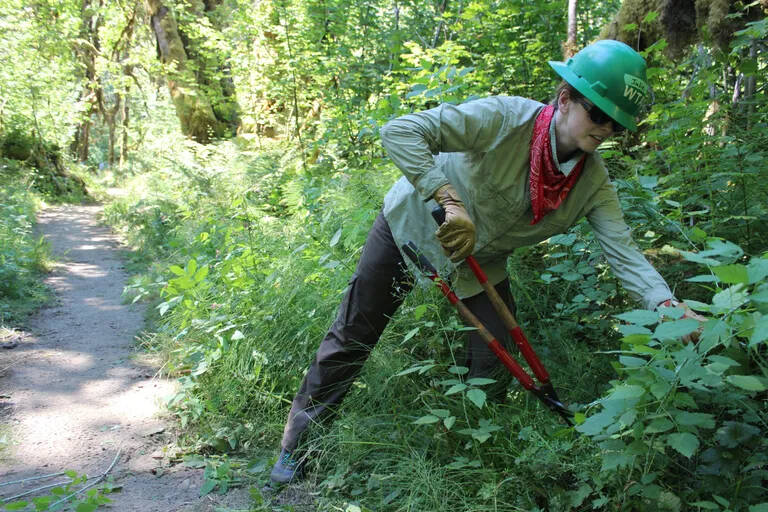I had been looking for a gentle, family-friendly hike to break up the trip back to Seattle after a getaway to Lake Cushman.
Lower South Fork Skokomish trailhead on the Olympic Peninsula fit the bill. Although switchbacks gain a few hundred feet quickly while passing salal and sword ferns, the trail levels out into old-growth forest that provides ample shade. With the constant rain it is a mossy heaven.
Hike the Lower South Fork Skokomish
Round-trip distance: 8.6 miles
Minus a few dips and climbs when crossing tributaries of the South Fork Skokomish River, the trail is predominantly flat, gaining just 800 vertical feet. While the trail technically extends a full 10.3 miles to the Upper South Fork Skokomish, a trailhead also reachable by forest road, the most popular stretch is the first 4.3 miles to the former Camp Comfort, a campground that washed away in 2007. You’ll need a Northwest Forest Pass at the trailhead.
That a campground could wash away is an indication that the South Fork Skokomish is no tame trickle. Between heavy rain and snowmelt during the fall, winter and spring, the river can change course dramatically.
Charlotte “Charlie” Romine knows that reality better than most. I ran into Romine about 2 miles up the trail when I encountered the Washington Trails Association crew that a sign had warned about. A half-dozen people in hard hats were busy pruning overgrown brush.
“The river meanders,” Romine said. “It takes land and trail. We have to adapt and do a lot of reroutes.”
Romine, a retired master chief with the Naval Construction Battalion, or Seabees, knows a thing or two about engineering in tough conditions. She is the WTA’s chief crew leader for the Olympic Peninsula — the only paid crew in the Olympics, with the rest of the work coming from volunteer labor — and on this day, she was admiring her team’s handiwork building a turnpike.
“The first time I came through here, the trail was 6 inches deep in water,” Romine said. This once-swampy stretch now boasts an elevated tread with ditches on either side. The new section will keep hikers’ boots high and dry, even during the wet season.
It took multiple trail work seasons to complete the turnpike job, which required transporting gravel and wood by hand from as far as three-quarters of a mile away, not to mention lots of digging. The turnpike was part of a larger reroute away from the voracious appetite of the South Fork Skokomish River, which kept gobbling up the trail where it ran too close to the riverbank.
The reroute required building a small bridge and establishing new creek fords. Trail crews are consummate recyclers — a washed-out bridge becomes the raw material for a new creek crossing — and thoughtful designers: Romine showed me another ford with rocks for hikers on one side and plain dirt next to it for horse hooves.
Work on the Lower South Fork Skokomish has been ongoing since 2003. The most recent project kicked off in 2020 with funding from the U.S. Forest Service and National Wilderness Stewardship Alliance, as well as a federal grant from the Secure Rural Schools and Community Self-Determination Act. This summer saw 2,135 volunteer hours alone, which is a fraction of the tremendous amount of volunteer time sunk into trail maintenance so far this year through the WTA: 102,521 hours on over 260 trails statewide.
With the federal government’s June announcement of more than $500 million for recreation infrastructure in national forests, there are surely many more projects to come.
Some, like the ongoing maintenance of Snow Lake and Annette Lake trails, require full trail closures. Others, like the Lower South Fork Skokomish, allow hikers to look behind the curtain and see trail work in action. Stumbling upon a trail crew during a hike is a vivid reminder that trails don’t build themselves — and perhaps an enticement to volunteer.
On the return to the trailhead on this family hike, I appreciated little touches — how flat stones facilitate a stream crossing, where a stretch of trail was free of roots and rocks — that made hiking the Lower South Fork Skokomish as satisfying as driving on newly paved asphalt.
Come to think of it, given the likelihood of sitting in traffic, hiking fresh trail is a lot more satisfying.



